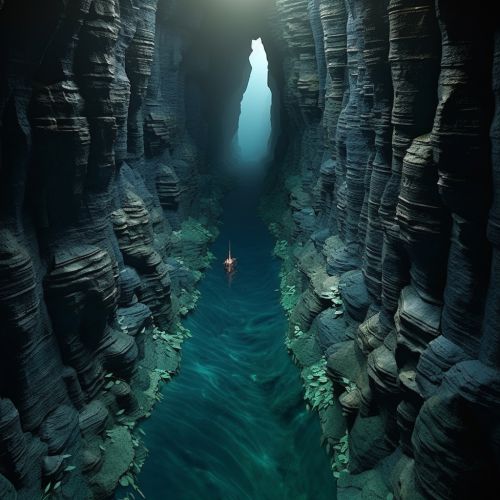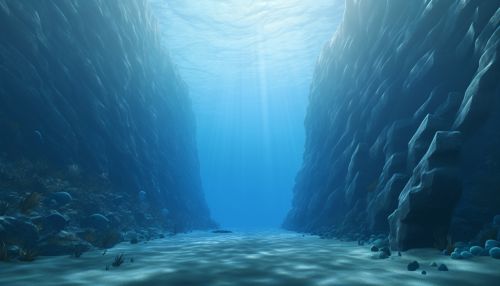Oceanic Trench
Introduction
An oceanic trench is a long, narrow, and steep-sided depression in the ocean floor, typically formed at a subduction zone during the process of plate tectonics. These trenches are the deepest parts of the ocean, and some of the most extreme environments on Earth.


Formation
Oceanic trenches are formed by the process of subduction, where one lithospheric plate is forced under another. This occurs at convergent plate boundaries, where two plates are moving towards each other. The denser of the two plates, usually an oceanic plate, is forced beneath the lighter continental plate, creating a deep trench in the ocean floor. This process is driven by the heat and pressure of the Earth's interior, which causes the lithospheric plates to move and interact.
Characteristics
Oceanic trenches are some of the deepest and most extreme environments on Earth. They can reach depths of over 36,000 feet (11,000 meters), and are characterized by high pressure, low temperatures, and complete darkness. Despite these harsh conditions, a variety of organisms have been found to inhabit these depths, including certain species of microorganisms, fish, and invertebrates.
Distribution
Oceanic trenches are found in every ocean, but are most common in the Pacific Ocean, where the process of subduction is particularly active. The Mariana Trench in the western Pacific is the deepest known point in the Earth's oceans, reaching a depth of over 36,000 feet (11,000 meters). Other notable trenches include the Tonga Trench, the Kuril–Kamchatka Trench, and the Philippine Trench.
Exploration
Due to the extreme conditions found in oceanic trenches, they have been relatively unexplored compared to other parts of the ocean. However, advances in technology have allowed for increased exploration of these environments. Submersibles, both manned and unmanned, have been used to explore trenches and collect data on their physical characteristics and the organisms that inhabit them. Despite these advances, much of the ocean's trenches remain unexplored and their full biodiversity and ecological significance is still largely unknown.
Impact on Earth's Geology
Oceanic trenches play a significant role in the Earth's geology. The process of subduction that forms trenches is also responsible for the creation of volcanoes, earthquakes, and mountain ranges. As the subducting plate is forced into the Earth's mantle, it melts and forms magma. This magma can rise to the surface and form volcanoes, creating volcanic island arcs and continental volcanic arcs. The movement of the plates can also cause earthquakes, which are often associated with subduction zones.
